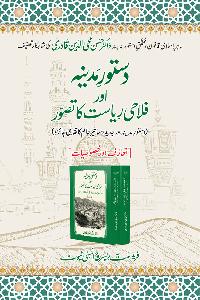Preface
PREFACE
There is no denying the importance of agriculture in strengthening the national economies of agrarian countries like Pakistan. It has been the subject of academic discussion among the classical economists especially David Ricardo who believes that the role of food supply is crucial in determining economic growth. Historically agriculture has played key role in achieving economic development.
According to academicians, economic development is a complex process of transformation involving a mix of factors. Rather than canceling each other, both industrialization and agriculture complement the process of development. Industrial-urban development is premised on the use of state-of-the-art technology, entrepreneurial skills and capital accumulation. This development directly or indirectly transforms agriculture. At the same time, industrialization further creates the demand for wage goods or food commodities. Growth in population builds up pressure on food supply thus paving the way for diversification and specialization in agriculture.
It was with this correlation between agriculture and industrialization in mind that I thought of writing comprehensively on various agriculture-related industries in Pakistan. What further motivated me to undertake this work was the lop-sided manner in which decision makers have paid attention to one area/sector of economy i.e. services at the cost of the other i.e. agriculture. By all accounts, the base of Pakistan’s economy remains agricultural with a large chunk of its populace still engaged in this age-old profession especially in rural areas. What a pity that despite having very fertile lands and hard working people, the country is having to resort to import of food items to meet its domestic needs!
Given the wider scope of the subject, I decided to divide the work in two volumes. The first volume has six chapters and starts with a general discussion on the role of agriculture in achieving and fostering economic development. Here I have discussed main strengths of the Pakistani agriculture with the help of statistical data drawn from various sources that are quoted at the end of the chapter. The first chapter also undertakes an overview of agriculture sector development.
The second chapter is devoted to the analysis of wheat and flour industry in Pakistan. Here starting with history of wheat crop, I have gone on to analyse the factors contributing towards its yields, wheat trends, plant breeding, wheat diseases and comprehensive appraisal of wheat economy in Pakistan. The chapter also discusses the international dimension of food crisis and how it can affect Pakistan if the latter does not move on war-footing basis to respond to food challenges.
The third chapter is related to a comprehensive and detailed appraisal of cotton and textile industry in Pakistan. This chapter discusses both international and domestic angles of cotton and textile industries with special reference to the neighbouring countries of Pakistan like India and China. The discussion on textile industry focuses on its general overview, textile exports, nature of competition, problems and prospects of textile industry.
The fourth chapter Sugar Industry in Pakistan discusses issues such as sugarcane production, planting time and methods, seed selection and treatment, fertilizer application, sugar processing, distribution and supply channel, sugar production and sale, market dynamics, sugar politics, governmental role, international sugar scenario and the impact of sugar industry on environment etc.
The fifth chapter Rice Industry in Pakistan is devoted to a threadbare discussion on various facets of sugar industry such as rice variety, rice seeds, fertilizers, rice production constraints and opportunities, Pakistani rice exports, exports trends and international rice trade etc.
The sixth chapter concludes the first volume. It is in the nature of general discussion on the potential of agriculture and contribution it could make to cause and foster economic growth. I have underlined the need of introducing wide-ranging reforms in the agricultural sector to arrest its decline and give it place which agricultural sector rightly deserves in our economic policies.
The important aspect of the book is not merely the diagnosis of the problems and identification of economic malaise that is characterizing various industries but also the presentation of findings, solutions and recommendations. References have been given at the end of each chapter along with the exhibits.
I am sure the first volume of Economics of Agriculture Industry in Pakistan will be of immense interest for the policy makers, academicians as well as the general readers.
Hussain Mohi-ud-Din Qadri
(April, 2009)
Copyrights © 2024 Minhaj-ul-Quran International. All rights reserved



![The Constitution of Medina & The Concept of the Welfare State [Introduction and Salient Features]](https://minhajbooks.com/images-books/thumbnails200/The-Constitution-of-Medina-amp-The-Concept-of-the-Welfare-State-Introduction-and-Salient-Features-Dr-Hassan-Qadri_722.jpg)